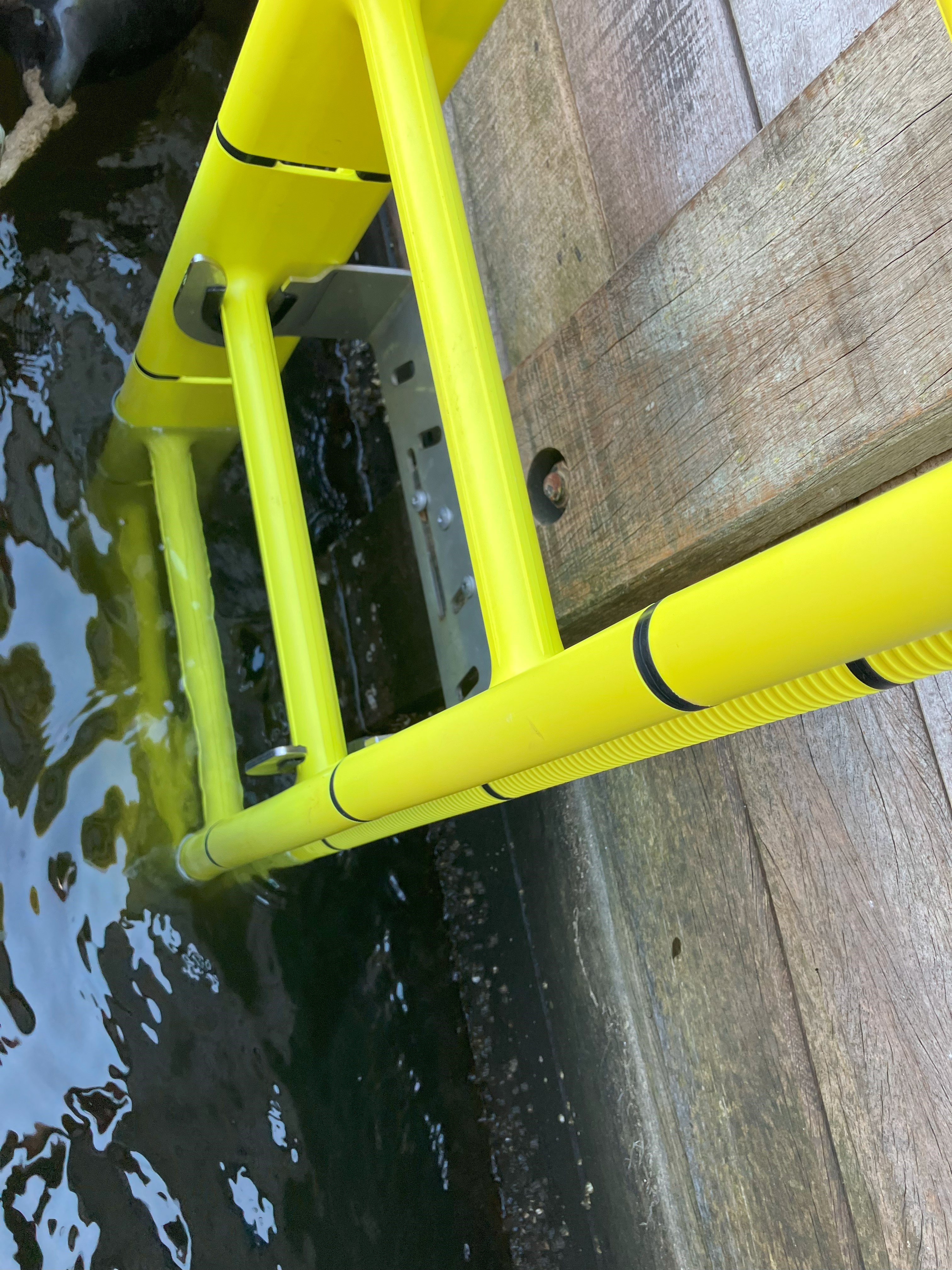"An increase in drowning incidents along quays is a global phenomenon. It correlates with urban growth, which includes the conversion of old dock areas into residential and restaurant spaces. The COVID-19 pandemic has also played a role, as marinas now have both new and more users," says Kim Haaning, Managing Director at Port-Safety.
The company's mission is to reduce the risk of drowning in harbours and marinas. Among other products this is achieved through their LifeLadder® - a specially designed ladder that is installed along the quayside and differs significantly from traditional steel ladders, particularly in terms of safety.
"Our goal is to reduce the risk of drowning in ports and marinas. We achieve this with our ladders, which serve as potential lifelines for individuals when accidents occur. Typically, these accidents involve people who are alone and need a rapid means of getting back to safety. Here, our bright yellow LifeLadder® offers an advantage as it remains highly visible, even at night," explains Kim Haaning.
Visible Ladder with a Low Carbon Footprint
In addition to enhanced visibility, LifeLadder® offers several other advantages over traditional steel ladders. It is visible because it is colored-through, eliminating the need for maintenance painting to maintain visibility. Constructed from synthetic materials, LifeLadder® addresses the issue of corrosion common in the spray-zone for steel ladders.
The synthetic material also makes the ladder lightweight, eliminating the need for specialized equipment during installation. This year, Port Safety has introduced a product improvement called the "Fork Bracket." It enhances the lower brackets that support the ladder, allowing for easy un- and re-installation during maintenance or cleaning without requiring a work platform or crane.
"We are continually working on improving our product, and in this process, we place great emphasis on sustainable production. Our sustainability journey began in 2020, when we participated in the 'Sailing Towards Zero' project, funded by the Danish Maritime Foundation. In this project, a CO2 footprint comparison of various maritime products was made. Our LifeLadder® was compared to traditional galvanized and painted steel ladders. The third-party calculation showed, that our ladder cuts the CO2 footprint (cradle-to-gate) to less than half: 49% compared to the traditional ladder. Last year, we made optimizations that reduced the product's footprint to 46%. Our Fork Bracket solution this year has further reduced it to 43%," says Kim Haaning.

Fork Bracket, Photo: Port Safety
However, he emphasizes that their sustainability ambitions do not end there. One of their next steps is to use recycled steel in the production of brackets, a process that is currently underway through the network of the industry organization Danish Maritime.
"This next step in our journey towards a carbon-neutral product is essentially about utilizing recycled materials so that they can be used in our life-saving equipment. It naturally aligns with our mission to save lives that we also have this focus on sustainability, which concerns us all," says Kim Haaning.
About Port Safety
We are dedicated to enhancing the safety of individuals residing and working along the waterfront. The presence of a vertical wall facing the water necessitates that access to safety is highly visible and intuitively recognizable day and night. The safety ladder must also withstand the corrosion associated with the wet/dry and salty environment while remaining visible without the need for additional maintenance. An extensive design process led to our groundbreaking solution, LifeLadder®. Since its market launch in the spring of 2018, LifeLadder® combined with our solar-powered LightUnits and marinaLightUnits has improved safety in harbours, marinas, and cities in 35 countries worldwide.